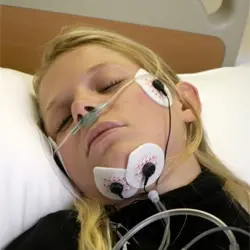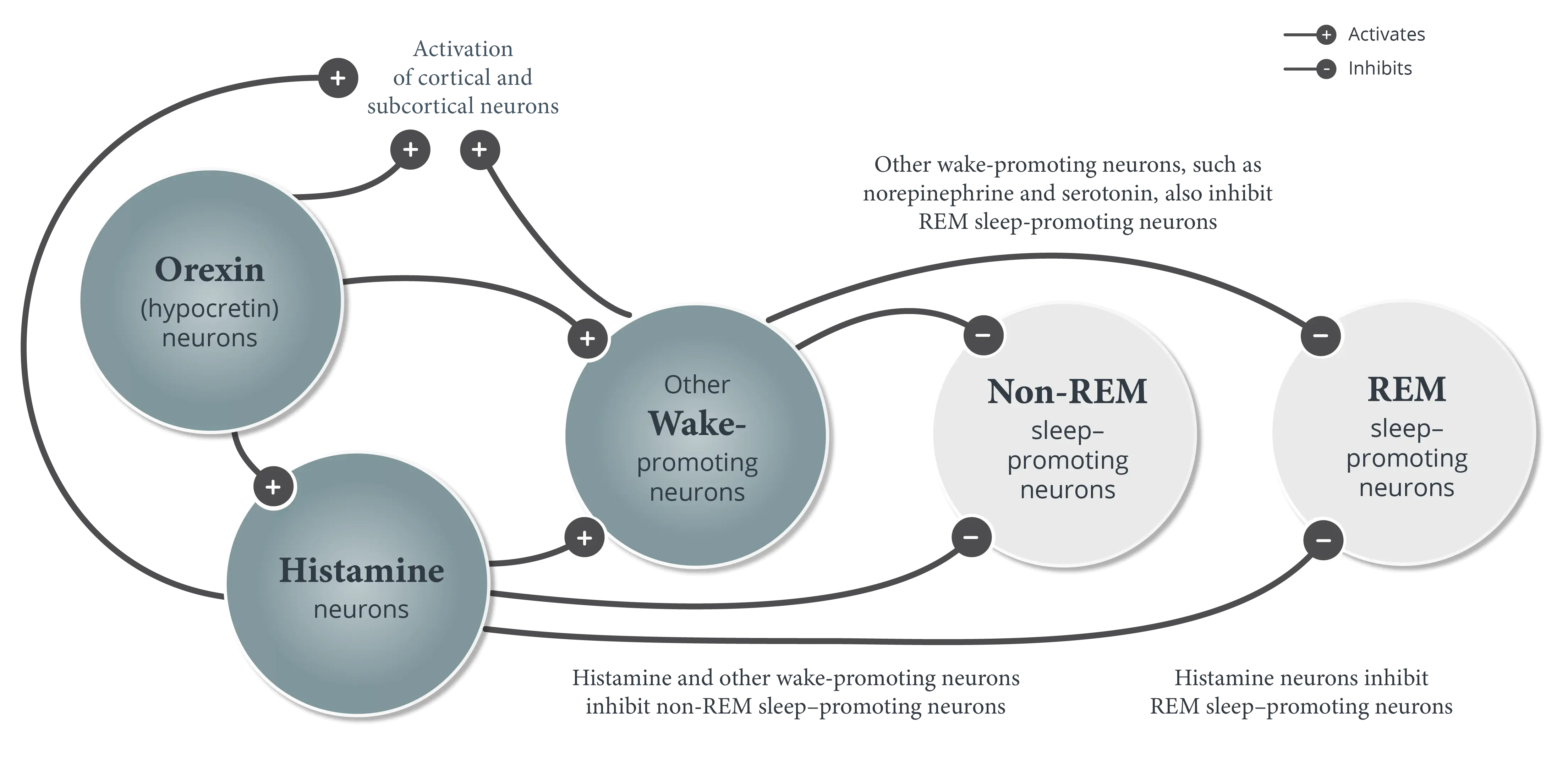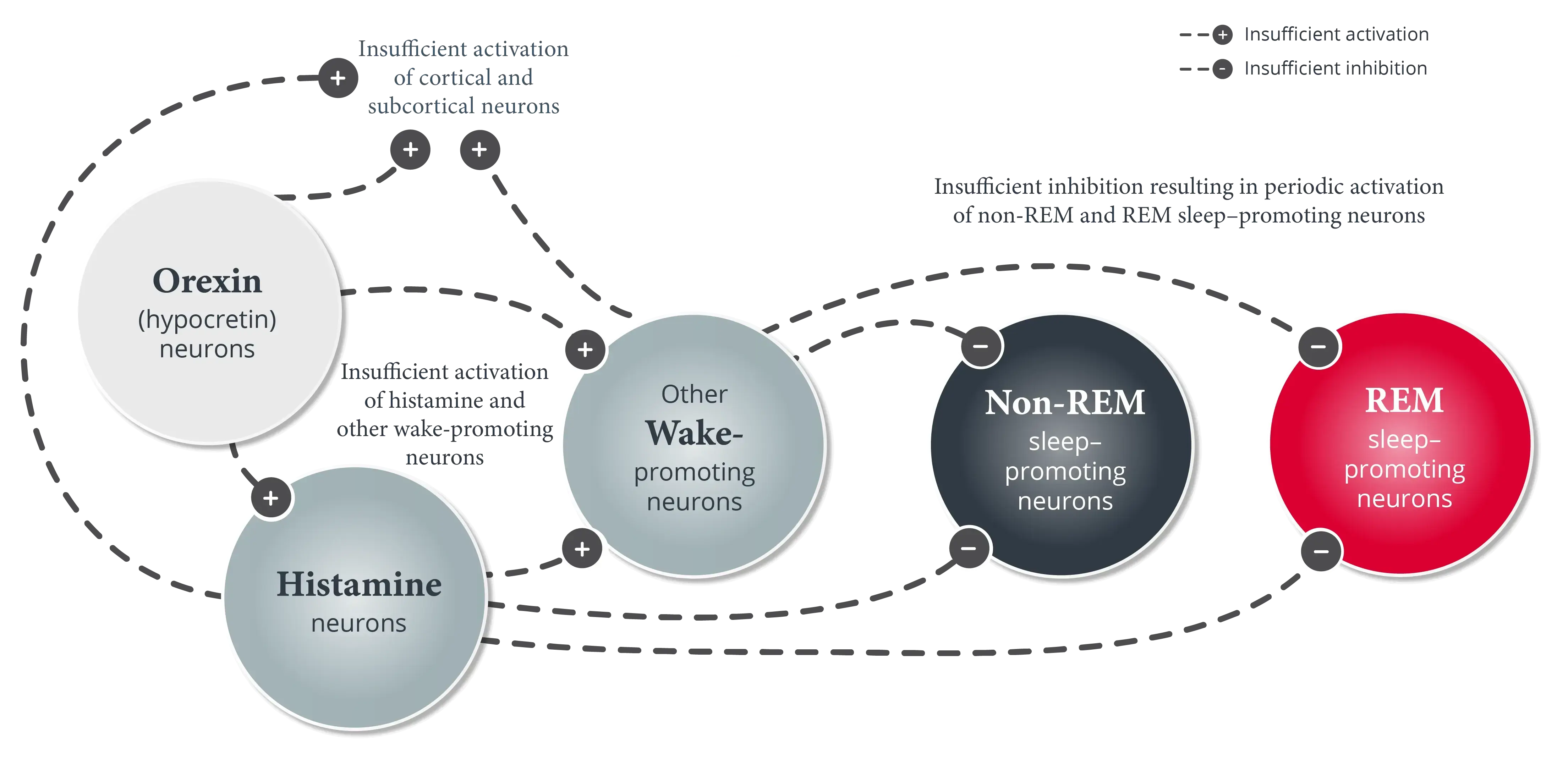

Evaluating Symptoms of Narcolepsy in Pediatric Patients
This content was developed using “Clinical features and diagnosis of narcolepsy in children,” published on UpToDate (2024), and other materials.
Evaluating Symptoms of Narcolepsy in Pediatric Patients
This content was developed using “Clinical features and diagnosis of narcolepsy in children,” published on UpToDate (2024), and other materials.
Overview
Several validated tools are available to assess excessive daytime sleepiness (EDS) in children and adolescents with narcolepsy.1
The tools used to assess symptoms of narcolepsy in pediatric patients are similar to those used to assess symptoms in adult patients; however, there are some tools validated specifically in pediatric patients.1
The first evaluation should include discussion about the patient’s medical history, level and impact of symptoms (or daytime sleepiness), and any other conditions that may be causing their sleepiness.1
Polysomnography (PSG) and the Multiple Sleep Latency Test (MSLT) should be performed to objectively evaluate EDS in pediatric patients with narcolepsy.1 This is in line with best practices for evaluating EDS in adult patients.1,2
The Pediatric Daytime Sleepiness Scale (PDSS) is specific to the evaluation of EDS in pediatric patients.1 It is validated in children and adolescents aged 5 to 17 years.3
There is also a modified version of the Epworth Sleepiness Scale (ESS) for use in children and adolescents: the ESS-CHAD.1 This scale is validated in children and adolescents with narcolepsy with cataplexy aged 7 to 16 years.4
Cataplexy is a key symptom of narcolepsy type 1 and should be evaluated during the clinical interview.2 The Pediatric Narcolepsy Severity Scale (NSS-P) can also be helpful in evaluating symptoms of narcolepsy other than EDS.5
Cataplexy may appear some time after the onset of EDS, so it is important to evaluate for cataplexy in pediatric patients at each visit.2
The severity of cataplexy is multifaceted and should not be based solely on the clinical features of cataplexy attacks themselves.6 Instead, it is also important to consider psychosocial consequences and limitations on daily life that may occur as a result.6,7
References
- Maski K, Kotagal S. Clinical features and diagnosis of narcolepsy in children. Clinical Decision Support | UpToDate | Wolters Kluwer. Updated July 29, 2024. Accessed January 6, 2025. https://www.uptodate.com/contents/clinical-features-and-diagnosis-of-narcolepsy-in-children
- American Academy of Sleep Medicine. International Classification of Sleep Disorders. 3rd ed, text revision. American Academy of Sleep Medicine; 2023.
- Lehert P, Plazzi G. Comparing symptom measurement tools in pediatric narcolepsy. Sleep Epidemiology. 2022;2(100032):2667-3436.
- Wang YG, Menno D, Chen A, et al. Validation of the Epworth Sleepiness Scale for Children and Adolescents (ESS-CHAD) questionnaire in pediatric patients with narcolepsy with cataplexy aged 7-16 years. Sleep Med. 2022;89:78-84.
- Barateau L, Lecendreux M, Chenini S, et al. Measurement of narcolepsy symptoms in school-aged children and adolescents: the Pediatric Narcolepsy Severity Scale. Neurology. 2021;97(5):e476-e488.
- Overeem S. The clinical features of cataplexy. In: Baumann CR, Bassetti CL, Scammell TE, eds. Narcolepsy: Pathophysiology, Diagnosis, and Treatment. Springer; 2011:283-290.
- Maski K, Steinhart E, Williams D, et al. Listening to the patient voice in narcolepsy: diagnostic delay, disease burden, and treatment efficacy. J Clin Sleep Med. 2017;13(3):419-425.







